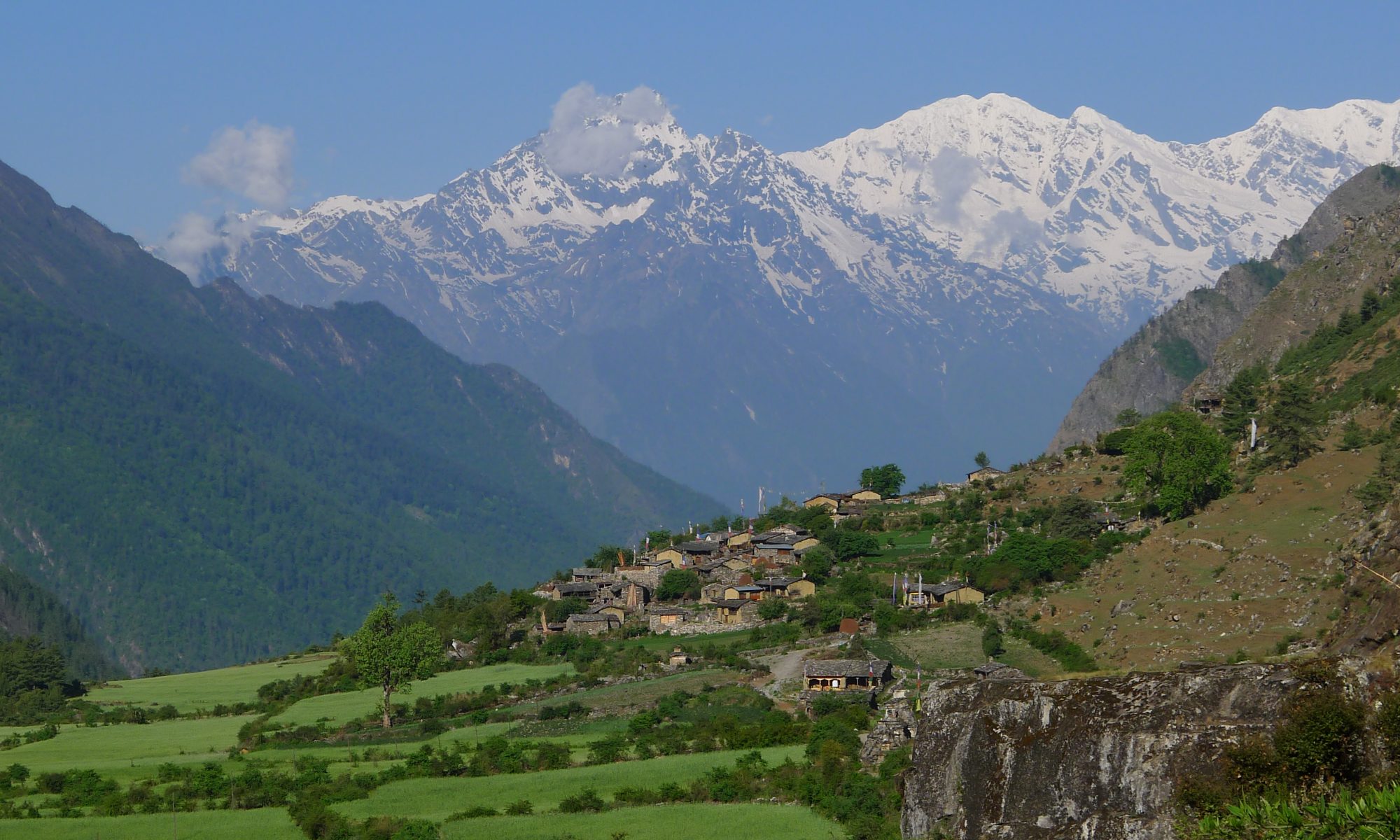
Nepal is an Asian country lying along the southern slopes of the Himalayan mountain ranges. Landlocked by India and Tibet, the country extends roughly 500 miles from east to west, and from 90 to 150 miles from north south. The capital, Kathmandu, is nestled at the intersection of two major rivers in the Central region of the country.
Landscape
The terrain of Nepal is characterized heavily by the rugged landscape of the Himalayan mountain ranges. Roughly 75 percent of the country is covered in mountains. The country is divided into four main vertical belts extending east to west across the country. The Tarai is a low, fertile land adjacent to the India border. The Churia Range is a nearly perpendicular section of mountains with can range up to 4,000 feet in height, extending all the way east to the Mahābhārat Range. There is a Mid-Mountain range that surrounds Kathmandu, spanning the gap between the Mahābhārat Range and the Great Himalayan Mountains. The Great Himalaya Range are of the highest peaks on earth, ranging upwards of 29,000 feet.
Peoples
The population of Nepal was around 28.98 million in 2016. The varied historical immigrant groups from Asian groups of northward Tibet and Indo-Aryan groups from the India subcontinent to the north provide a diverse ethnic, cultural, and linguistic background for the palette of the Nepalese people. Nepali is the most common language of the country, representing around 48% of the population. The rest of the cultural and linguistic background is highly varied, but a large number of the mountain communities and villages speak local dialects in the Tibeto-Burman family. These languages can be explored further in the Nepal Languages discussion. Hinduism dominates most of the regions populated by Nepali speakers, and other smaller percentages of the population represent Buddhism, Muslim, and other religious beliefs.
Politics
The ruling power of Nepal was rooted in a constitutional monarchy up until the early 1990s, when autocratic power was greatly reduced to make way for the a new constitution, bringing parliamentary powers to ruling elite, and a Prime Minister to act as executive lead for the nation. The monarchy was fully dissolved in 2008, bringing forth a newly furnished republic assembly to lead Nepal into full democracy. The driving force behind the second reform was a Maoist sect that had been pushing against the ruling monarchy since the late 1990s in the wake of the push of communism in the east. The resulting government was plagued by turmoil after numerous attempts at the Maoist group (self named the United Communist Party of Nepal (Maoist) ) to strong arm their new parliamentary power through removal from parliamentary votes, protest against the election of the prime minister, etc. This led to a period of political unrest through the late 2000s and early 2010s. Unfortunately, the political divide was unsolved before disaster struck in the spring of 2015. In September of 2015, a formal constitution was signed.
More political information can be found at the following articles:
https://en.wikipedia.org/wiki/Politics_of_Nepal
http://www.bbc.com/news/world-south-asia-12499391
More information about Nepal can be found on the Britannica.com discussion on Nepal
